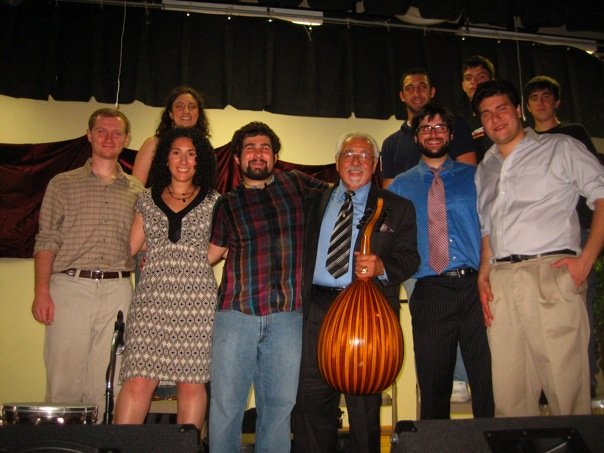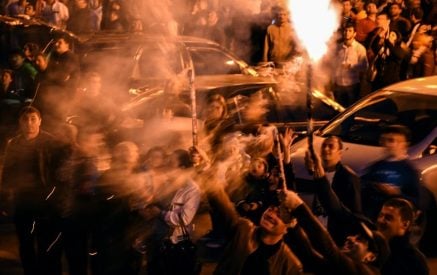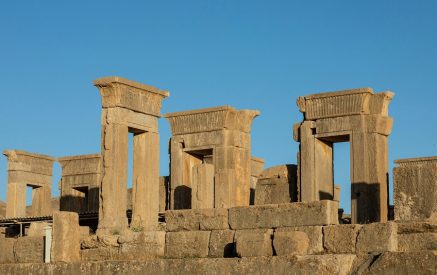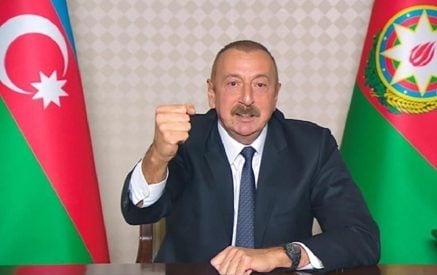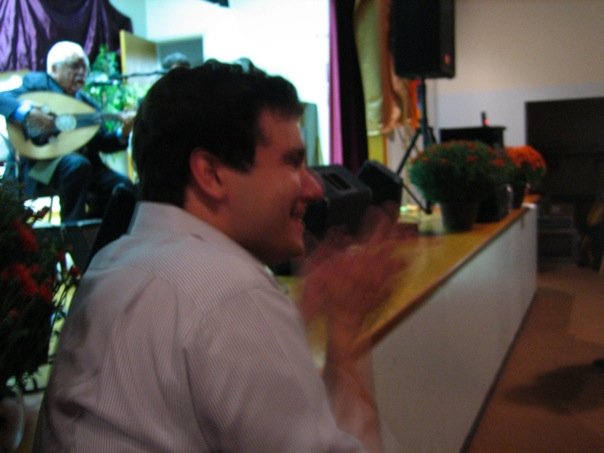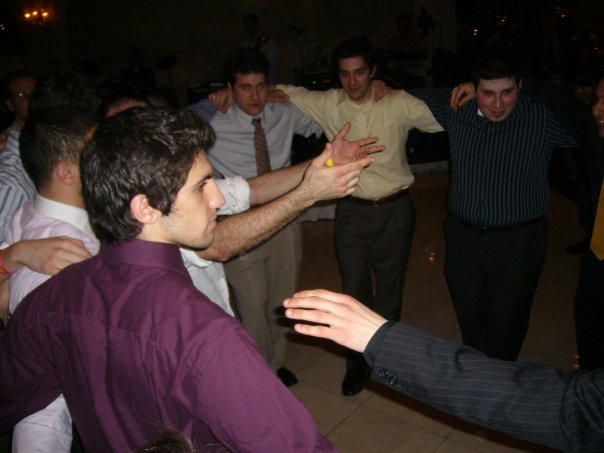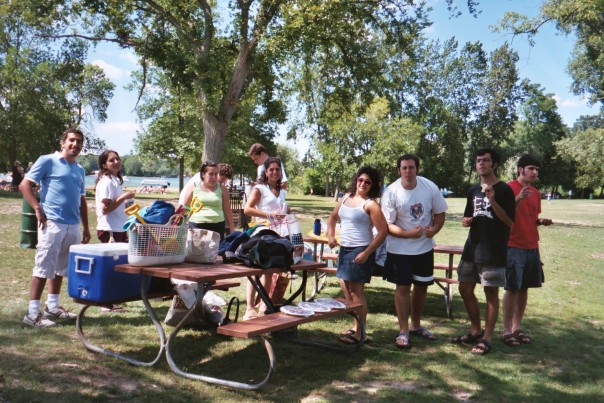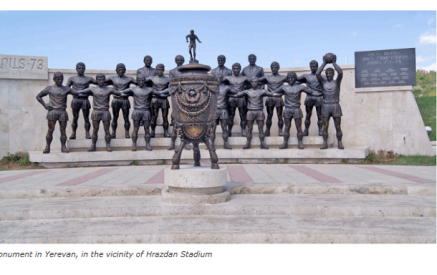The Armenian Mirror-Spectator. “In those days, we lived from Armenian event to Armenian event,” my friend reminisced. A group of us had gathered in a small restaurant in Chicago. It was a reunion of sorts — most of us were the same age and had been close friends throughout our late teens and twenties. The time period my friend was speaking of was now 10-15 years behind us. But her comment was spot on. A few months later, her comment sparked, for me, memories and reflections on how we had grown up in the Armenian community of the Midwest.
Growing up Armenian in the Midwest didn’t seem unique or interesting to us at the time, but it seems so to me now; now that time has passed, people have moved on, and I have gotten a closer glimpse of the Armenian community around the world.
If you live on the coast and have never been here, the Midwest might not be what you think it is — at least not the areas where most Armenians live. We don’t live on farms, and I don’t know a single Armenian who made their living that way. In Fresno, yes. In the Midwest, no. Most Armenians live in the Rust Belt, surrounding the cities of Detroit, Cleveland, Chicago, Milwaukee — and “good old” Racine, Wis. There are also the two “outpost” communities around St. Louis and Minneapolis-St. Paul. None of these are rural areas, and with the exception of Racine, they aren’t even small towns. They’re cities, urban areas. Most Armenians live in the suburbs of those cities, though there is a large community of Armenian young professionals in downtown Chicago, and increasingly, downtown Detroit, which is on the upswing. While the fall might bring trips to a cider mill or apple orchard, and summer usually brings treks “Up North” to the fabled land of touristy beach towns on the Great Lakes, most of our lives are lived “in the city.” Unlike in New York, where “the city” specifically means “Manhattan,” in Metro Detroit “the city,” while sometimes referencing the City of Detroit in contrast to the suburbs, in this context means the urban/suburban complex of Southeast Michigan, as opposed to rural areas.
I didn’t grow up in the country; I grew up on the freeways of Metro Detroit, in the Greek-owned diners (which we refer to, for reasons to complicated to explain, as “coney islands”); in the heavily Jewish, Polish, and Italian suburbs, surrounding an 80-percent Black city. When we visited our friends in Chicago, it was pretty much the same. The only differences were that Chicago had a nicer downtown, was much, much bigger; and has a large Latino population with small Middle Eastern population.
Read also
And – I feel I have to shout this at the top of my lungs: THERE ARE MORE ARMENIANS IN MICHIGAN THAN IN ILLINOIS AND WISCONSIN COMBINED!
For some reason, many Armenians (I’m look at you, L.A. residents) have a hard time believing or understanding this. I don’t wish any disrespect to my wonderful friends in Chicago, whom much of this article is about, and whom I love dearly; and besides, I myself lived in Chicago for a while. But Detroit is and remains the Armenian capital of the Midwest. True, demographics are changing; 20-40 years from now we might not be able to say that anymore. But Detroit’s dominant position, which it has held for the past 100 years, is still intact. To my knowledge, the last time there were more Armenians in Chicago than in Detroit was around 1917.
Long Distances
In the Midwest, things are far apart. It’s about 3 hours to drive from Cleveland to Detroit. Then it’s about 5 hours to drive from Detroit to Chicago. It’s another hour and a half north from Chicago to Racine, and then 45 minutes more to Milwaukee. To drive from one end to the other — Cleveland to Milwaukee — is about 7 hours on a good day. The region as a whole is almost as extensive geographically as the East Coast Armenian community. The difference is, we probably have as many Armenians in the entire region as there are in one state on the East Coast.
The geographic distribution of Armenians gave us the social life that my friend had referred to. We did feel like we lived from event to event — the daily minutiae of our American lives were made bearable by the fact that we were looking forward to the next dance, the next retreat, kef weekend, or whatever it was. But, attending those things always meant travelling. And the low number of Armenians in each community compared to the East Coast or California communities meant that a lot of our best friends were in other cities — a not uncommon experience for Armenians, but almost a given for Midwestern Armenians.
There is one Armenian camp in the Midwest – Hye Camp, run by the Eastern Diocese. Many Armenians affiliated with the Prelacy/ARF circles also sent their kids to Hye Camp, because it was close. Most of us met our out-of-town friends at camp, and I was no different.
When we got to be older we became involved in the ACYOA (Armenian Youth Church Organization of America). When we were able to drive and had the freedom to travel, the inevitable road trips began.
Trips to Chicago or Wisconsin always started with a text message: “Are you coming to the dance?” Then the preparations would begin – what to take, what clothes to wear, who you were going to stay with (Armenian parents would not countenance their kids’ friends staying at a hotel when they didn’t have to), how long you were going for, who was riding in the car. It seemed like this happened practically every month.
For those of us like me, who struggled to fit in at school or college, the Armenian community was a welcoming, friendly environment. It’s where we found people we could bond with. People who would be friends for life. There were always the long goodbyes (typical of all Armenians, of course), and when we went home we couldn’t wait until the next reunion with our out-of-town friends.
And so…a couple months later we would make the trek again. Certainly, there was something happening at least 4 times a year, whether it was a dance, a retreat, or a fundraiser – whether it was through ACYOA, AGBU, an Armenian university group, or one of the churches. We’ve seen legends of Armenian kef music perform countless times – Richard Hagopian, Onnik Dinkjian, John Berberian, and Detroit’s own Hachig Kazarian, master of the clarinet. Our local bands, the Johnites and Nigosians of Detroit, Mid East Beat of Racine, and Hye Vibes of Chicago brought the kef to our local dances and picnics. And because we hungered for the company of other Armenians, we absolutely came to every ACYOA Sports Weekends, and most years to AYF Olympics (though none of my group of friends were even a part of AYF). We were frequent, excited attendees to the St. Nersess Summer Conferences. When we would go to St. Nersess or to the ACYOA General Assembly, we would always notice the comparative lack of people from New England, or rather, their low representation in proportion to their famously large numbers. Our theory, and I think it was correct, was that Boston and New England Armenians had quite enough Armenian social life in their own region of the country. They didn’t need to travel for it – not even to New York. And I often meet Armenians from L.A. who, while strongly identifying as such, shy away from community involvement in general. It is also a lot easier to do that when you have schools, churches, bookstores, bakeries, and so on everywhere you turn.
The Midwest was different. Being Armenian is always a struggle in the Diaspora, but it was a special kind of struggle in the Midwest. We learned not to take the community for granted, because we knew if we didn’t stay connected, we wouldn’t have a community. And through the tight bonds of friendship that we created, we kept the community alive.
What did being Armenian in the Midwest consist of? What was our Armenian-ness? It was our food, our dances, our families, our family stories. It wasn’t just listening to your own grandma’s story, but visiting a friend in another city who might have a different family background, and listening to their Armenian story. It was our church and our faith, which most people in the group were devoted to, and which bonded us together with each other and with our ancestors. There was the language, which wasn’t necessarily spoken daily, but which we had a great familiarity with, and which we were always in the process of learning more about – all of us asking questions to our elders – “and how do you say this?”
It was also the dances, the kefs, the parties we threw — the times we heard the master oudist, Richard Hagopian play, in Milwaukee, in Detroit, in Chicago — the latter was in an outdoor, public concert! The ACYOA Sports Weekend in Detroit in 2007 with the Battle of the Bands in a hall full of some 700 people. The time Michael Gostanian and the younger generation of musicians played AYF Olympics in 2011 in Chicago and we danced the night away to the hottest Armenian band in the country. All the times one of the families in Chicago opened their home to a gang of young Armenians to sleep in the bedrooms, the couch, the basement, on the floor — so they could attend a dance — and how we rolled up the rug and had late night dance parties in the living room. The way that Armenians from Racine, Chicago, and Cleveland would descend upon Detroit every Thanksgiving Weekend for the annual back-to-back AYF and ACYOA “November Dances” (going strong since the 1930s!), and the different activities people would think up to do during the day. How the music-lovers like me would just watch the stage and as the beat would pick up for a “Michigan Hop,” Greg Nigosian would play a descending staccato riff on his oud, and start singing: Heroo degh, yar oonem, dzaghgadz garod em… “I have a sweetheart in a faraway place…” Whether it was a love interest or just a friend, that pretty much described our lives, and the other line in the song was also just as pertinent: Chi kalis, vor desnem, garods arnem…”She doesn’t come, so I can see her, and my longing be satisfied.”
It was the story of how we came to the Midwest, to these factory and mill towns like Racine, Waukegan, Cleveland, Milwaukee, South Pullman, and the biggest mill town of them all: Detroit, Michigan. Just as everyone in Racine worked for J.I. Case or Johnson Wax, the livelihood of everyone in the Detroit area was tied to the American auto industry – Ford, GM, and Chrysler. It was the story of where we were from before that – we had the old line Sepastatsis, Kharpertsis, Everegtsis, and Kghetsis, not to mention the Tomarzatsis of Racine, along with the second wave of immigration: Bolsetsis, Halebtsis, Beirutsis, Anjartsis, and Hayastantsis. We had several families in Chicago whose parents were from the Anatolian interior: Malatya, Arapgir, Sepastia – places that Detroiters like me had only heard about in relation to our great-grandparents’ generation. We had a few Barsgahyes. And we had a lot of Bakutsi refugees, whose struggle for their Armenian identity was real – their identity and their church squashed for 70 years of Soviet rule, and then turned into refugees by the pogroms of the early 1990s, they were the only people from overseas who would look to a 3rd-generation Armenian-American like myself for their Armenian cultural cues. We heard their stories with awe and true respect, as we did the stories of those who had suffered persecution in post-Genocide Turkey or who had spent generations struggling to uphold the remaining proud Armenian cultural institutions of Istanbul.
Detroit, Chicago, Cleveland, Racine, Milwaukee, St. Louis, and St. Paul all had their own characteristics, but it was take too long to get into them extensively here. Detroiters seemed to be the leaders, and we certainly threw the best dances, and produced the best Armenian delicacies (in our minds), but if we didn’t have Chicago and Racine to market our crazy ideas to, it wouldn’t have been the same. Chicago people were special, friendlier. They didn’t have the whiff of East Coast attitude that Detroiters like my friends and I, in comparison, seemed to have. Yet they were in their own way hipper than us, and a lot more of them seemed to speak Armenian. Racine has a special place in the heart of any Midwestern Armenian. Being a small town with a relatively large Armenian population, the people there had a unique personality and a unique outlook on life. Most of their ancestors came from the village of Tomarza in Central Anatolia. Tomarza, though not a remote mountain fortress like Zeitoun or Sassoun, had been inhabited exclusively by Armenians, and administered by four families who claimed descent from Cilician nobility. How did they do that out in the open, in the middle of the plains near Kayseri? How did Armenians managed to forge such a strong community in a seemingly random Midwestern small town? Both answers are unclear. The independent, yet not militant, spirit of Tomarza lives on in the unique character of the Racine Armenians. And I would be remiss not to mention that the ever-present, yet under-valued Armenian trait of a goofy sense of humor is very strong with this unusually laid-back community. In the end, every community contributed in one way or another, but most of all, the real contributions of each community were the good-hearted people that they produced.
Mostly our Armenian-ness consisted in keeping the knowledge of who we were, and passing it on to the next generation. As we all got older, many of my friends have gotten married and had children of their own. I myself have not had that good fortune, but I am sure that when I do, I will impart to my children the lessons I learned not only from my family or even from my community in Detroit, but also from the broader Armenian-American community of the Midwest.
But passing on your heritage doesn’t just mean to your children. Sometimes it means passing it on to the next group of kids, ten years younger than you. I think of how many times at Armenian dances that we, the older group, started the line, and younger people joined in and followed us! How I taught the younger guys how to dance the Haleh. The last dance that was held in Michigan before Covid broke out was the U-M Armenian Club’s annual January Hye Hop. I arrived at this dance, that I had attended since high school, that I had been on the committee for and attended as a U-M student, that I had played at with my own band more than once, and I realized for the first time that they didn’t even need me to start the line. The kids knew what they were doing. The dance already started, and even if the leader sat down, the dance would keep on going…while the oud player sang “Heroo degh, yar oonem…”




















































